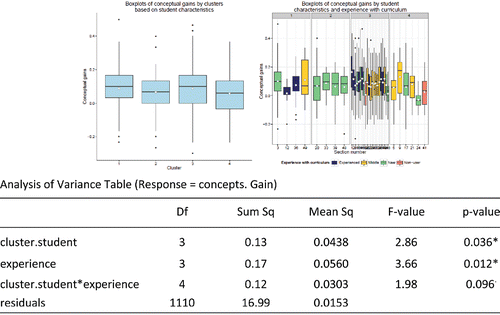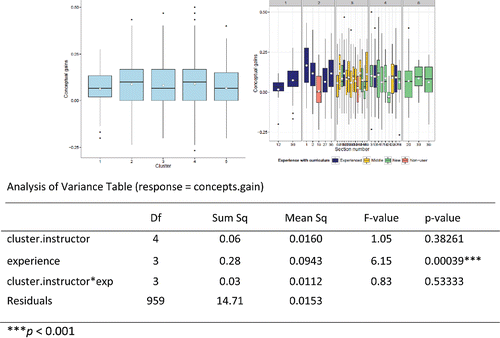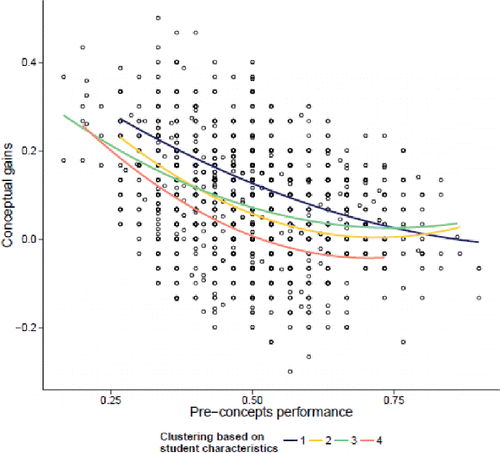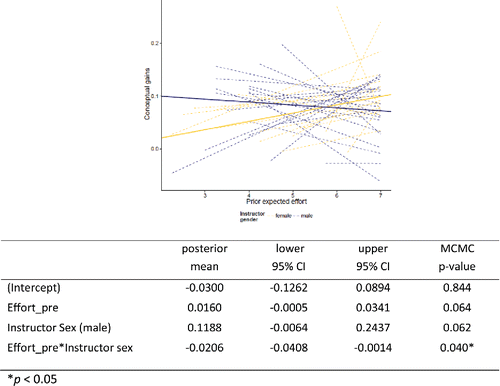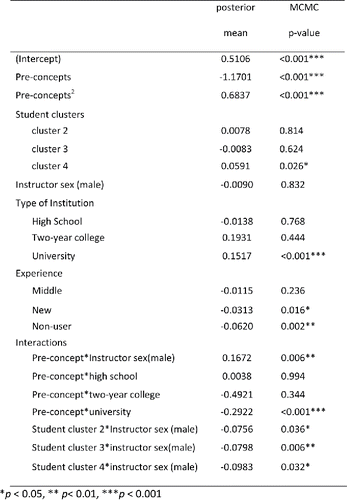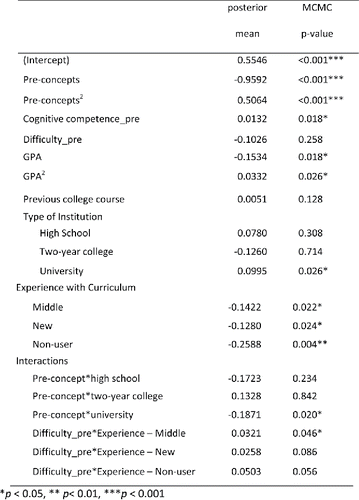Figures & data
Table 1. Datasets used for analysis based on participation rates.
Figure 1. Gains and “standardized gains” on the concept inventory by section for the 36 sections in Gains Data. The dotted line is the overall average across all the students (overall average gain = 0.084, overall average normalized gain = 0.151).

Figure 2. Gains on concept inventory grouping sections by level of instructor's experience with the simulation-based curriculum.
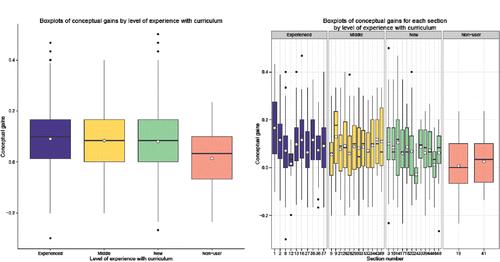
Table 2. Variable means for student cluster analysis.
Table 3. Variable means for instructor cluster analysis.
Figure 7. Scatterplot and hierarchical model of conceptual gains versus prior affect by instructor curriculum experience.
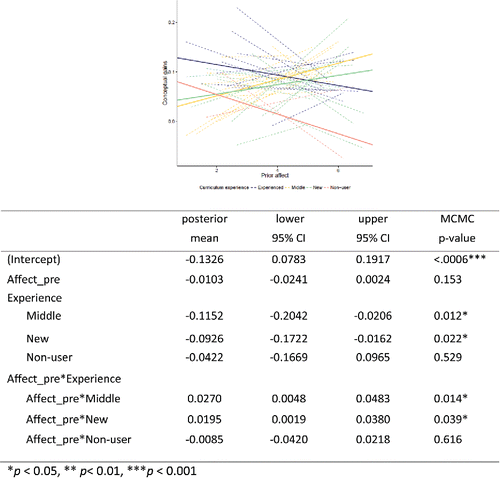
Figure 9. (a) Gain on concept inventory versus pre-test showing overall male/female instructor lines; (b) gain versus pre-test separated by type of institution; (c) comparison of gains for male/female instructors across the four student clusters.

Figure 11. (a) Gains versus prior expected difficulty by level of experience with curriculum; (b) gains versus pre-concepts by school type.
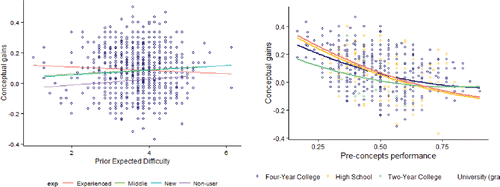
Figure 12. Comparison of pre-/post-scores for an instructor who switched to the simulation-based curriculum between fall and spring semesters.
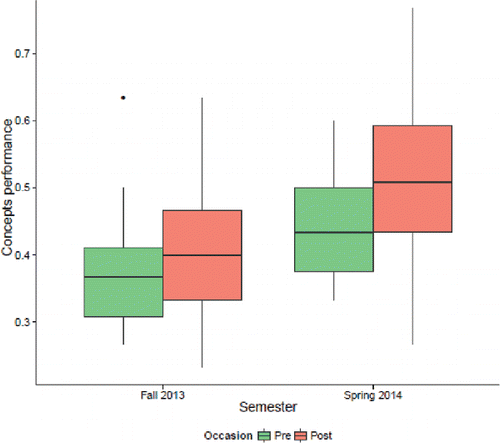
Table 4. Categorizations of concept inventory questions (means and standard deviations) separated by instructor level of experience with curriculum.

